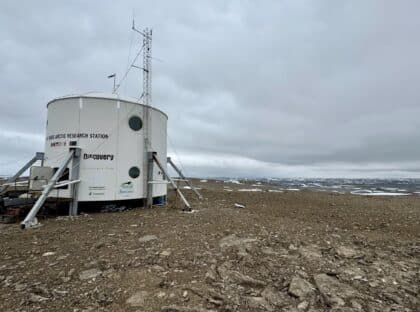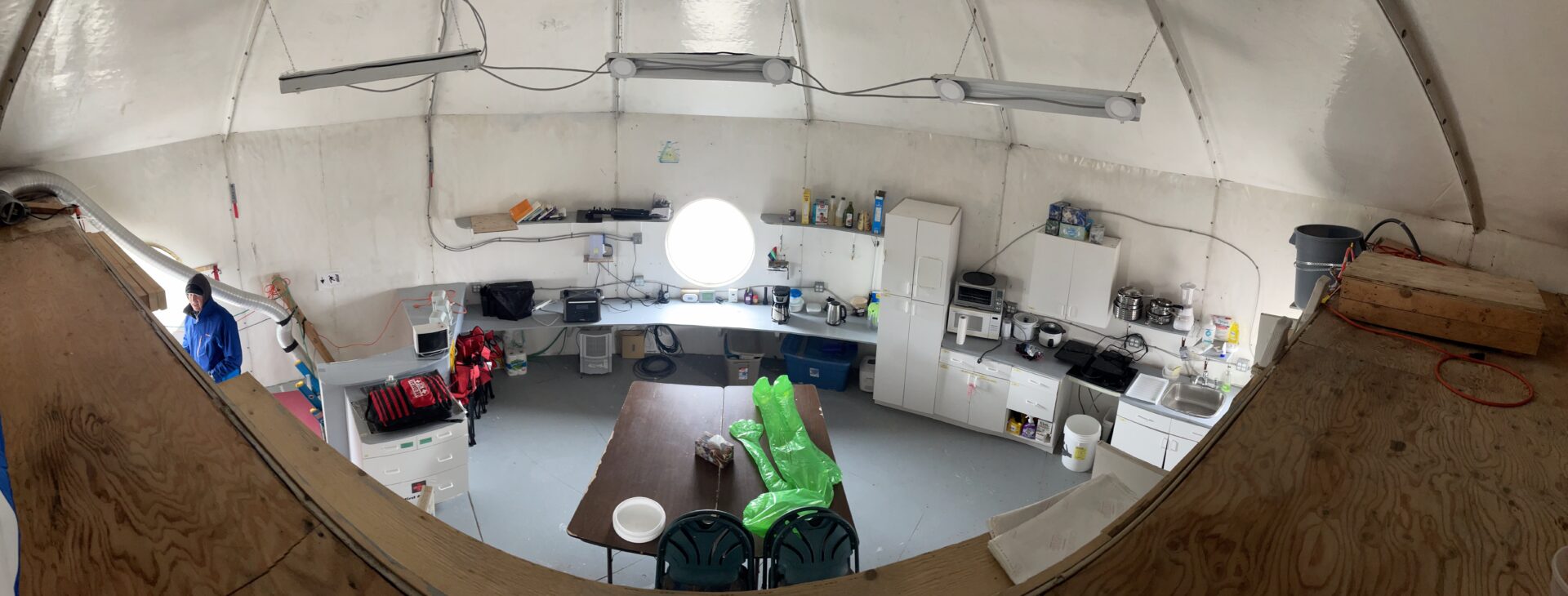
The Mars Society has announced the successful completion of its 2025 Arctic analog mission at the Flashline Mars Arctic Research Station, located on Devon Island in Nunavut Territory. Titled “From Pole to Pole and Back Again,“ the five-week expedition, conducted throughout July and early August, demonstrated the resilience, adaptability, and scientific capacity of human teams operating in one of Earth’s most Mars-like environments.
The mission was designed as a Mars analog—simulating the conditions of future human exploration on the Red Planet—and involved a complex, multi-crew rotation under severe Arctic conditions. Despite encountering significant weather delays and compressed timelines, the mission team achieved all primary objectives without any safety incidents and delivered valuable scientific returns that will inform future planetary exploration.

The Flashline operation featured three distinct crew deployments: the Advance One Team, tasked with station setup and baseline operations; Crew 17, whose mission was significantly shortened due to flight delays; and Crew 18, which conducted an extended full simulation period. Flight operations were supported by Borek Air using Twin Otter aircraft staging from Resolute Bay. At the heart of the operation was a record-setting 28-minute crew transition—an extraordinary logistical feat that showcased the professionalism and training of the teams involved.
“Every year, we learn in the Arctic that it’s one of the harshest places on the planet, with extremophiles at practically every turn. The Arctic Archipelago is one of Earth’s many carbon sinks and a set of lungs itself. Planetary protection should be top of our minds when we set foot on another planet,” said Terry Trevino, Flashline Mars Arctic Research Station Director.
Over 35 days, more than eight major scientific experiments were conducted, and over 50 environmental samples were collected. Among the top mission priorities was a high-value nano-plastics environmental contamination study. Field teams employed portable vacuum filtration units and fluorescence tagging systems to analyze meltwater pools, snow basins, and permafrost runoff. The results confirmed the presence of nano-plastic contamination at all test sites, providing critical evidence of how even the most remote ecosystems are impacted by global pollution. These findings have direct implications for closed-loop life support systems on Mars, where contamination control will be essential for long-duration crewed missions.

In parallel, the crews carried out ISRU (In-Situ Resource Utilization) experiments by extracting water from Arctic stone samples. This work validates previously published research on Martian ice harvesting systems and supports the development of robust water extraction protocols for future missions. In addition, biological studies involving permafrost core sampling and RNA preservation were successfully completed to support extremophile research and investigations into the viability of future Mars-based agriculture.
Crew members also participated in human factors studies, including a psychological experiment using voice inflection analysis to monitor stress levels in real time. These investigations contribute to a growing body of literature on the behavioral and psychological dynamics of small teams operating in isolated, confined, and extreme (ICE) environments.
Station infrastructure—now over 25 years old—remained operational throughout the mission. Key systems including life support, power, environmental controls, and communications were monitored, maintained, and in some cases upgraded by the crew. A full waste remediation effort was completed, adhering to “Leave No Trace” protocols.
One of the mission’s key milestones was the establishment of the first-ever pole-to-pole amateur radio communications link between the Arctic and Antarctica, representing a major step forward in global analog collaboration. The mission also included partnerships with the University of Arizona (Dr. Joel Cuello), federal grant-supported research initiatives, and stealth-mode commercial aerospace startups testing prototype technologies.

Direct mission support was provided by the Mars Society, Mars Society Australia, and Protoplanet, reflecting a growing international partnership focused on analog testing and operational readiness. The 2025 Arctic mission was executed in parallel with ongoing Mars Society activities at MDRS in Utah and preparations for new simulation campaigns in Ladakh, India, further broadening the scope of the organization’s global Mars analog program.
“The team has successfully sustained complex Arctic expeditions to Flashline Station for the past three field seasons, with an expanding science agenda. Deep gratitude is extended to the partnerships with the local community, including Nunavut and Aziz Kheraj, for their invaluable support,” said James Burk, Mars Society Executive Director.
All scientific data collected during the Flashline mission campaign will be shared with international research partners and submitted to peer-reviewed journals. The success of this mission reinforces the role of the Flashline Station as one of the world’s premier Mars analog facilities and underscores the Mars Society’s continued leadership in preparing for the human exploration and settlement of the Red Planet.
For more information about the Mars Society’s analog research programs or the 2025 Arctic mission, please visit www.marssociety.org.


